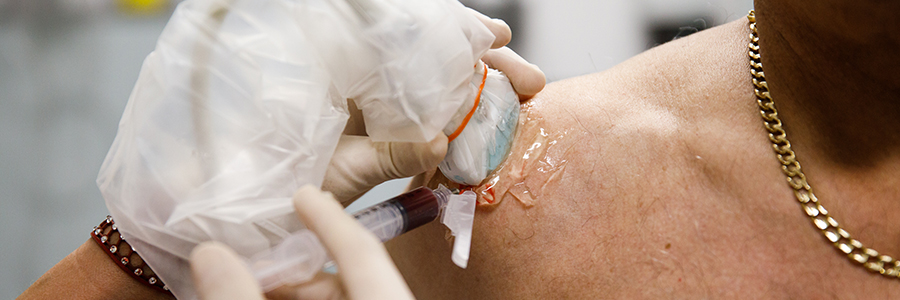Plasma Injections for Soft Tissue

Platelet-rich plasma injection (PRP) is an emerging therapeutic procedure in medicine for the treatment of both acute and chronic soft tissue injuries. It involves collecting blood from the patient's arm, separating the platelets via centrifuge and injecting them back into the patient's injured tissue area.
*Platelets are cells that clot blood and contain over 300 active growth factors to help improve healing by stimulating "normal" issue repair instead of "scar" tissue.
What are the risks of PRP Injections?
There is no risk for transmission of blood-borne disease or transfusion reactions because the process uses the patient's own blood. With this said, there may be a risk of infection or bleeding.
PRP Injection Procedures
The procedures (including blood collection, centrifuging, injection and rest) can take upwards of two hours. It is important that patients eat a meal and drink lots of water before the procedure. Depending on the body part being injected, patients may not be able to drive themselves home following the procedure.
Moreover, growth factors from the platelets can take between two hours and seven days to be released after the injection. After PRP, patients will be asked to rest for 48 hours and to restrict their activity level for one week, while the healing process is under way.
PATIENTS SHOULD NOT USE ANTI-INFLAMMATORY MEDICATIONS (e.g., Advil, Motrin, or prescribed NSAIDs) INCLUDING ASPIRIN FOR TWO WEEKS BEFORE AND FOUR WEEKS AFTER PRP. Anti-inflammatory medications negatively affect the benefit of concentrated platelets and can make PRP ineffective. Acetaminophen (e.g., Tylenol) and ice packs applied to the area may be used after PRP if the patient has residual discomfort.
Signs of infection after the procedure include:
- Increasing pain
- Heat
- Redness
- Pus
- Nausea
- Fever
- General malaise
If there are any signs of infection, contact the Glen Sather Clinic at 780-407-5160 (during business hours) or Alberta Health Link at 1-866-408-5465 (after hours).
Before and after PRP, the patient will be asked to complete an assessment of their level of pain and limitations to function. This will help the physician assess the effectiveness of PRP. In some persons/injuries, more than one PRP injection is needed to obtain pain resolution and restore function.